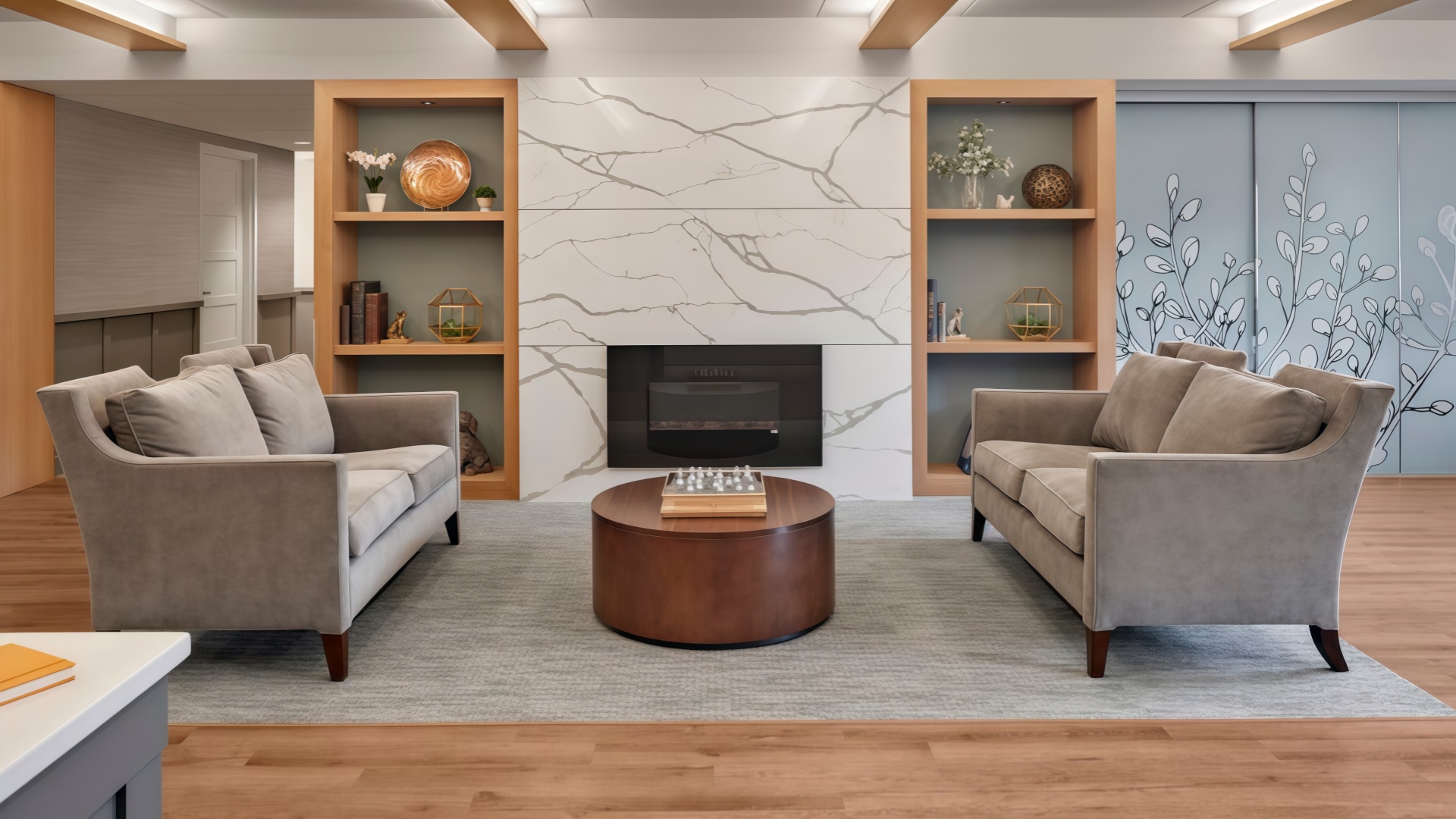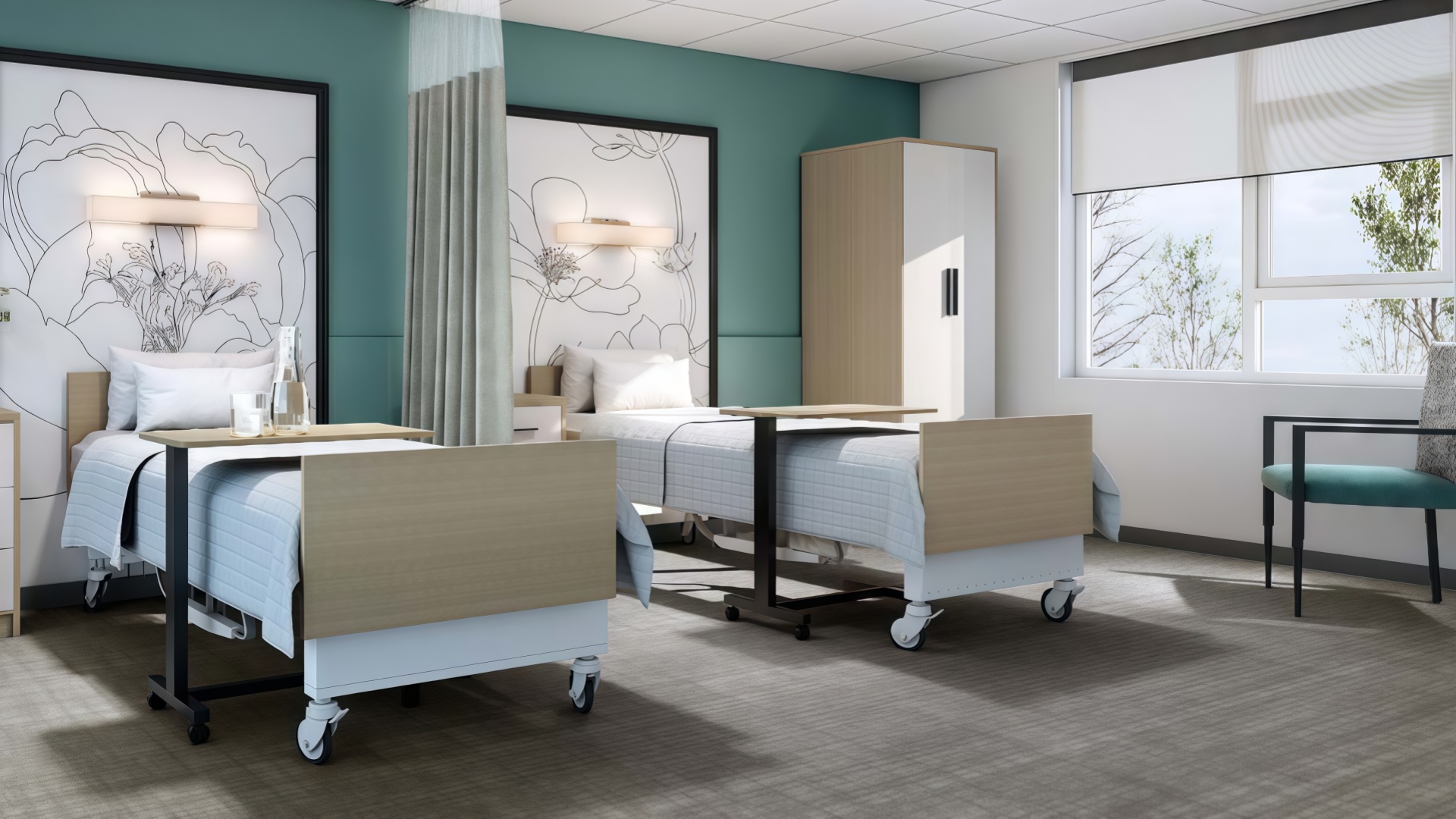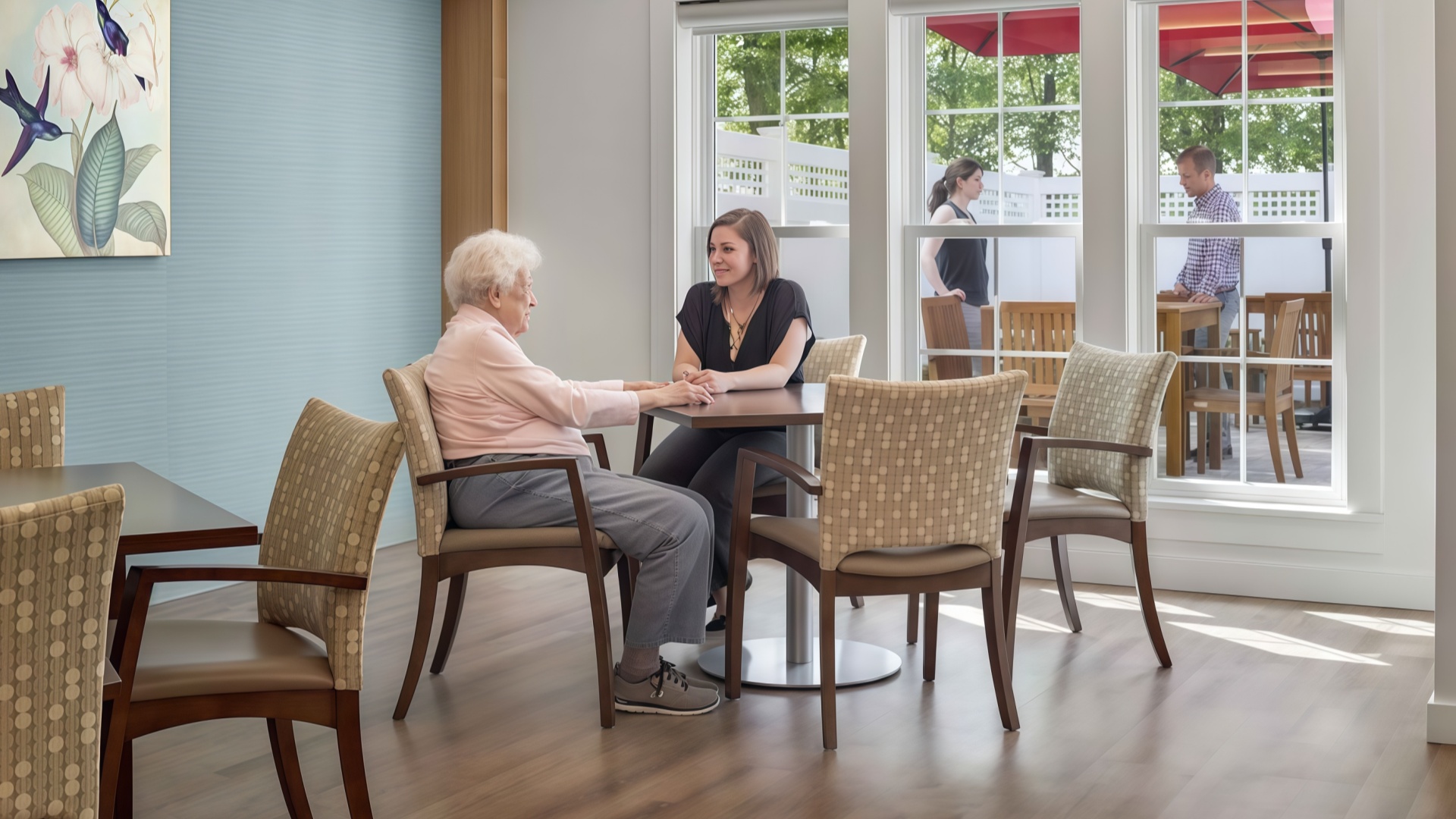Views: 0 Author: Site Editor Publish Time: 2025-11-11 Origin: Site









Have you ever considered how environmental design directly impacts behavioral symptoms, medication requirements, and quality of life outcomes for dementia patients? Research demonstrates that thoughtfully designed dementia-friendly environments reduce behavioral incidents by 30-50%, decrease medication dependency by 20-35%, and significantly improve resident wellbeing and safety. Yet many memory care facilities treat furniture selection as a generic institutional task rather than a specialized clinical intervention requiring profound understanding of dementia-specific needs. Memory care furniture design represents a sophisticated intersection of clinical neuroscience, behavioral psychology, and environmental engineering creating spaces where residents with cognitive impairment experience security, independence, and dignity despite progressive neurological decline. Understanding how furniture specification, spatial arrangement, material selection, and environmental design work together to support dementia populations fundamentally transforms care environments from potentially chaotic institutional spaces into therapeutic sanctuaries supporting optimal resident functioning.
Dementia represents one of the most significant healthcare challenges of our time, affecting millions globally with profound implications for individuals, families, and healthcare systems. Environmental design—particularly furniture selection and spatial configuration—profoundly influences dementia patient behavior, medication efficacy, and quality of life through supporting orientation, reducing anxiety, preventing unsafe behaviors, and enabling remaining independence. Modern memory care design recognizes that physical environment quality represents a therapeutic intervention as essential as medication management and clinical care protocols.
In this comprehensive guide, you will discover:
Dementia-specific design principles supporting cognitive processing, orientation, and behavioral management
Furniture selection strategies addressing wandering, safety, functional capacity, and psychological comfort
Color, lighting, and spatial design supporting wayfinding, reducing confusion, and managing behavioral symptoms
Accessibility and universal design enabling independence across varying functional capabilities
Evidence-based implementation strategies translating research into practical facility design
By understanding comprehensive memory care furniture design, facility administrators, designers, clinical staff, and family advocates can create environments supporting optimal functioning for people with dementia while reducing behavioral symptoms, medication requirements, and caregiver stress.
Dementia profoundly alters cognitive processing, perception, and behavioral regulation, requiring environmental designs fundamentally different from standard elderly care or general institutional settings.
Core cognitive changes in dementia:
Memory and orientation impairment:
Short-term memory loss preventing recall of recent events, people, or conversations
Long-term memory preservation enabling recognition of familiar objects and environmens
Disorientation to time, place, and person creating profound anxiety and confusion
Executive function decline impairing planning, sequencing, and complex decision-making
Visual-spatial processing difficulties affecting wayfinding and environmental navigation
Impaired judgment affecting safety awareness and risk assessment
Behavioral and emotional consequences:
Increased anxiety from confusion and disorientation
Paranoia and suspicion emerging from memory loss and perception gaps
Wandering behavior reflecting searching for familiar people or places
Aggression and resistive behavior emerging from fear or misunderstanding
Sundowning (increased confusion/agitation evening hours) from circadian and fatigue effects
Emotional reactivity with exaggerated responses to environmental stimuli
Environmental design implications:
Supporting remaining cognitive capacity:
Consistency and predictability reducing cognitive load and anxiety
Clear visual cues compensating for memory loss through environmental signage
Familiar patterns and routines leveraging long-term memory and muscle memory
Reduced choice options preventing decision paralysis from executive dysfunction
Simplified environments reducing sensory overload and confusion
Logical spatial organization supporting wayfinding through intuitive design
Strategic environmental modification directly reduces behavioral symptoms without increasing medications or physical restraint.
Wandering prevention strategies:
Environmental design addressing wandering:
Secure perimeters preventing unsafe exits without feeling restrictive or institutional
Dead-end hallways creating natural stopping points rather than through-corridors
Visual barriers (subtle décor elements) disguising exits and redirecting movement
Interesting destination spaces providing purpose to wandering behavior
Circular floor plans enabling continuous walking without disorientation
Varied environments reducing monotony that encourages aimless wandering
Outdoor access enabling safe wandering in contained garden environments
Behavioral support outcomes:
Reduced elopement incidents through environmental containment
Increased independence enabling safe expression of remaining walking ability
Decreased medication needs through behavioral rather than pharmaceutical management
Reduced caregiver stress from successful behavior management
Improved resident dignity through supported autonomy rather than restraint
Reducing agitation and aggression:
Environmental factors triggering behavioral symptoms:
Excessive noise and sensory stimulation overwhelming processing capacity
Unfamiliar environments triggering anxiety and defensiveness
Staff or resident confrontation escalating conflicts through perceived threat
Fatigue or discomfort reducing tolerance for frustration
Chaotic activity creating anxiety from inability to process multiple simultaneous events
Loss of privacy increasing stress and agitation
Design interventions reducing agitation:
Acoustic treatments minimizing overwhelming noise
Calm color schemes and consistent aesthetics reducing visual chaos
Familiar, homelike environments supporting psychological comfort
Private spaces enabling withdrawal and stress reduction
Clear wayfinding reducing frustration from disorientation
Routine-supporting layouts enabling predictable daily patterns
Comfortable furniture supporting physical comfort reducing pain-triggered aggression
| Table 1: Dementia-Specific Design Principles and Outcomes |
| Design Principle | Implementation Strategy | Expected Behavioral Outcome | Clinical Benefit |
Environmental Consistency | Predictable layouts, familiar décor | Reduced anxiety and disorientation | Improved comfort |
Clear Visual Cues | Signage, color coding, familiar objects | Better orientation and wayfinding | Increased independence |
Reduced Stimulation | Quiet zones, controlled lighting | Lower agitation and aggression | Better mood regulation |
Wandering Support | Circular paths, secure perimeters | Purposeful movement vs. unsafe elopement | Maintained mobility safely |
Home-Like Environment | Residential furnishings, personal spaces | Emotional comfort and familiarity | Reduced behavioral symptoms |
Accessible Bathrooms | Clear signage, supportive furniture | Successful toileting independence | Dignity and reduced incidents |
Outdoor Access | Secured gardens, benches, shade | Beneficial activity and stimulation | Physical and mental health |
Memory care furniture must simultaneously support functional safety while appearing non-institutional maintaining residents' psychological comfort and dignity.
Geri chair and seating selection in memory care:
Standard geri chairs and specialized alternatives:
Anti-ligature geri chairs with full-height arms and enclosed footrests preventing self-harm
Wandering prevention features including secured cushions and tamper-proof construction
Colors supporting calm (soft blues, greens) rather than clinical white or stark tones
Moderate recline (15-25 degrees) rather than full upright or deeply reclining positions
Highly durable, cleanable surfaces for incontinence and accident management
Armrest height supporting transfer assistance and preventing elopement attempts
Functional benefits in memory care:
Prevention of elopement through design reducing successful exit attempts
Safety during behavioral episodes through structures preventing self-harm
Functional positioning supporting digestion, circulation, and comfort
Transfer support enabling caregiver assists with dignity
Congregate seating enabling supervision in common areas
Specialized memory care chairs:
Emerging designs addressing dementia-specific needs:
Distraction-resistant furniture without protruding hardware or removable components
Integrated positioning supporting optimal therapeutic posture without complex mechanisms
Camouflaged safety features appearing residential while providing behavioral protection
Sensory-appropriate materials providing comfort without overstimulation
Easy-clean upholstery with antimicrobial treatment for incontinence management
| Table 2: Memory Care Seating Specifications |
| Seating Type | Key Features | Safety Level | Behavioral Support | Dignity Preservation | Cost Range |
Standard Geri Chair | Fixed positioning, armrests, footrest | Very High | Good | Moderate | $400-700 |
Anti-Ligature Geri | Enclosed design, no sharp points | Excellent | Excellent | Moderate | $700-1,200 |
Memory Care Chair | Distraction-resistant, tamper-proof | Very High | Very High | High | $900-1,500 |
Recliner (supervised) | Positioning flexibility, residential style | Moderate | Moderate | Very High | $800-1,500 |
Transfer Chair | High arms, firm seat, structured frame | High | Good | Moderate | $600-1,000 |
Private spaces require furniture supporting intimate care activities while maintaining safety and dignity.

Bedroom furniture for dementia residents:
Bed specifications:
Low-height beds (16-18 inches) reducing fall distance and easing transfers
Half-rails providing support without creating trapped feeling of full rails
Pressure-relieving surfaces (foam toppers) reducing pressure ulcer risk
Firm mattresses enabling easier transfers and reducing fall hazards
Non-slip flooring around beds reducing fall risk
Accessible storage for personal items supporting reminiscence and familiarity
Bedroom furniture reducing safety risks:
Secured dressers and nightstands preventing tipping hazards
Soft or padded edges on furniture reducing injury from falls
Minimal furniture reducing clutter and confusion
Familiar pieces (when possible) supporting comfort through recognizable objects
Non-skid pads preventing furniture movement during transfers
Bathroom furniture and grab systems:
Critical bathroom safety furniture:
High-capacity toilet seats (500+ lbs) accommodating weight and preventing tipping
Grab bars positioned supporting safe transfers and balance
Transfer benches with high backs and armrests enabling safe showering
Non-skid mats preventing slipping on wet surfaces
Accessible sinks with lever handles and accommodating wheelchair access
Emergency call systems integrated into bathroom spaces
Supporting functional independence:
Height-adjustable toilet seats accommodating diverse mobility levels
Supportive shower chairs enabling safe bathing with caregiver assistance
Clear organization of self-care items supporting grooming independence
Adequate spacing enabling caregiver assistance without excessive crowding
Appropriate lighting supporting visibility and reducing shadows causing confusion
Common areas require furniture supporting social engagement, nutrition, and activity participation.
Dining furniture specifications:
Dining tables and seating:
Round tables (vs. rectangular) reducing perception of hierarchy and promoting social connection
Height-adjustable dining furniture accommodating wheelchairs and diverse seating
Sturdy construction preventing tipping when residents use furniture for support
Comfortable, supportive chairs enabling 30-45 minute meal engagement
Non-glare surfaces preventing visual confusion from reflections
Non-skid pads preventing chair sliding during transfers
Activity space furniture:

Optimizing recreation and therapeutic engagement:
Puzzle tables designed for cognitive activity engagement
Arts and crafts furniture supporting creative expression
Library seating creating quiet reading or reminiscence areas
Gaming tables supporting social engagement
Music and entertainment spaces with appropriate seating
Window seating enabling outdoor viewing and light exposure
| Table 3: Common Area Furniture Design Features |
| Space Type | Furniture Type | Key Features | Therapeutic Purpose | Safety Considerations |
Dining Area | Round tables, supportive chairs | Accessible, sturdy, comfortable | Social dining, nutritional support | Anti-tip, accessible height |
Activity Room | Modular tables, varied seating | Flexible, engaging, removable components | Cognitive/physical activity | Safety compliance, durability |
Living Room | Residential seating, side tables | Homelike, comfortable, familiar | Social gathering, reminiscence | Clear pathways, secure placement |
Quiet Room | Recliners, soft seating | Comfortable, private, calm | Behavioral de-escalation | Safety, peaceful atmosphere |
Outdoor Space | Garden benches, pathway furniture | Shaded, accessible, interesting | Outdoor activity, nature exposure | Sturdy, slip-resistant, secure |
Sensory environment profoundly influences dementia resident behavior, mood, and functional capacity.
Color psychology in memory care environments:
Optimal color schemes:
Soft blues and greens supporting calm, reducing agitation (associated with water, nature)
Warm neutral tones (beige, taupe, soft gray) creating comfortable, safe perception
Accent colors (soft coral, sage, lavender) adding visual interest without overstimulation
High contrast elements improving wayfinding (light doors against dark walls)
Avoiding harsh colors (bright reds, intense oranges) associated with danger or alarm
Consistent color coding throughout facility supporting orientation and wayfinding
Color applications supporting function:
Red or orange trim on doors and pathways enhancing visibility
Blue/green dining areas supporting appetite and calm eating environments
Soft, warm bedroom colors supporting rest and relaxation
Yellow/amber activity spaces supporting energy and engagement
Consistent hallway colors reducing confusion and supporting wayfinding
Lighting design for dementia support:
Optimal lighting strategies:
Bright, indirect natural light supporting circadian rhythms and reducing confusion
Consistent 3000K warm white artificial lighting creating calm, non-clinical atmosphere
Layered lighting (ambient, task, accent) enabling environmental flexibility
Avoiding glare and harsh shadows preventing visual confusion and disorientation
Increased illumination levels (50-75 footcandles vs. standard 30-40) compensating for age-related vision changes
Dimmable systems supporting circadian-aligned lighting and evening relaxation
Sensory considerations:
Reducing overwhelming sensory input:
Acoustic treatments minimizing noise and echoes from hard surfaces
Soft textures in furnishings providing comfort without overwhelming stimulation
Natural materials (wood, plants) creating familiar, comfortable environment
Familiar scents (avoided over-perfuming) supporting recognition and comfort
Limited visual clutter reducing cognitive overload
Clear environmental organization directly supports orientation and independence in residents with spatial and memory impairments.
Wayfinding design principles:
Supporting navigation:
Clear signage with large print, simple language, and pictures supporting comprehension
Color-coded pathways (different hallway colors) enabling location identification
Recognizable landmarks (plants, artwork, distinctive doors) providing orientation reference points
Logical spatial organization with consistent patterns reducing disorientation
Easy-to-find bathrooms with distinctive signage and accessibility
Clear visual access to destination spaces (avoiding long, featureless corridors)
Destination area design:
Visible activity spaces encouraging participation and reducing wandering
Clearly marked bathrooms with universal symbols and contrasting colors
Distinctive dining areas easily identifiable from common spaces
Staff visibility enabling residents to locate assistance and support
Outdoor access that is obvious and easily found
Zoning strategies:
Spatial organization supporting function:
Quiet zones separate from active areas for behavioral management and rest
Activity zones concentrated in central areas encouraging engagement
Private spaces enabling withdrawal and stress reduction
Secure outdoor areas enabling safe wandering in nature
Staff areas remaining visible but not dominating resident spaces
| Table 4: Environmental Design Elements Supporting Wayfinding and Orientation |
| Design Element | Implementation | Memory Support | Safety Benefit |
Color Coding | Different hallway colors for zones | Visual landmark identification | Easier navigation |
Clear Signage | Large print, pictures, symbols | Language-accessible wayfinding | Reduced disorientation |
Consistent Layout | Predictable spatial organization | Familiar pattern recognition | Improved independence |
Visual Landmarks | Plants, art, distinctive features | Orientation reference points | Location identification |
Bathroom Marking | Distinctive doors, clear signage | Easy toileting access | Incontinence prevention |
Pathway Definition | Clear floor patterns or borders | Intuitive movement flow | Reduced wandering confusion |

Strategic furniture and environmental design directly prevents accidents and unsafe behaviors without requiring restraints or excessive medication.
Fall prevention through furniture design:
Furniture modifications reducing falls:
Appropriate chair heights (16-18 inches) enabling safe sitting and standing
Substantial armrests (full-height to seat level) supporting transfer assistance
Non-skid surfaces under furniture preventing movement during transfers
Clear pathways between furniture enabling safe mobility
Minimal tripping hazards from raised furniture edges or scattered items
Strategic placement of handrails and support furniture in high-risk areas
Non-slippery flooring with appropriate traction characteristics
Furniture securing and anti-tip measures:
Secured dressers and shelving preventing tipping when used for support
Furniture anchoring to walls preventing instability
Soft edges and padding reducing injury severity if falls occur
Strategic lighting eliminating dark areas causing disorientation or missteps
Regular furniture inspection identifying hazards before accidents
Wandering and elopement prevention:
Design strategies reducing unsafe wandering:
Secure perimeters preventing exit to unsafe areas
Visual barriers disguising exits without appearing institutional
Interesting pathways providing wandering purpose and engagement
Secure outdoor areas enabling safe wandering in nature
Staff visibility enabling monitoring without surveillance creating stress
Circular floor plans redirecting wandering to continuous pathways
Meaningful destinations supporting purposeful walking vs. aimless wandering
Optimized environmental design reduces medication requirements by addressing root causes of behavioral symptoms.
Behavioral symptoms addressed through design:
Environmental interventions replacing medication:
Agitation reduction through sensory optimization and reduced stimulation
Anxiety management through familiar, consistent environments
Sleep improvement through circadian-aligned lighting and comfortable furniture
Wandering redirection through supportive environments enabling safe mobility
Aggression prevention through understanding and preventing triggers
Social engagement through designed spaces encouraging interaction
Activity optimization through accessible spaces supporting participation
Clinical outcomes from environmental optimization:
Research-documented benefits:
30-50% reduction in behavioral incidents through comprehensive design
20-35% reduction in medication requirements when environmental factors addressed
Improved sleep quality through circadian-aligned design
Enhanced nutritional intake through pleasant dining environments
Reduced caregiver-related injuries through safer design supporting safer assists
Improved quality of life through supported independence and dignity
Family satisfaction improvement through improved resident outcomes and safety
| Table 5: Expected Outcomes from Memory Care Furniture and Environmental Design |
| Outcome Category | Behavioral Reduction | Medication Reduction | Safety Improvement | Quality of Life Impact |
Behavioral Incidents | 30-50% reduction | 20-35% reduction | Fewer injuries | Improved well-being |
Wandering/Elopement | 40-60% reduction | 15-25% reduction | Reduced unsafe exits | Supported mobility |
Agitation/Aggression | 35-50% reduction | 20-30% reduction | Fewer violent incidents | Better mood |
Sleep Problems | 25-45% improvement | 10-20% reduction | Better rest | Improved daytime function |
Social Engagement | 40-60% improvement | N/A | N/A | Enhanced connections |
Staff Injury Rates | 20-40% reduction | N/A | Safer assists | Better caregiver retention |
Conclusion
Memory care furniture design represents a sophisticated clinical intervention addressing root causes of behavioral symptoms through environmental optimization rather than relying primarily on medication or restraint. Strategic color selection, wayfinding support, furniture positioning, and sensory management work synergistically to create therapeutic environments supporting safety, independence, and dignity for residents with dementia. Evidence-based design principles transforming memory care environments from potentially chaotic institutional spaces into calm, supportive sanctuaries enabling residents to thrive despite progressive cognitive decline.
Key implementation recommendations:
Adopt dementia-specific design principles understanding how cognitive impairment affects environmental perception and behavior
Select furniture intentionally matching specialized dementia care needs rather than defaulting to standard institutional options
Create consistent, predictable environments supporting memory and reducing anxiety through familiarity
Support independence through accessible design and clear wayfinding enabling residents to function safely within remaining capacity
Integrate behavioral management through environmental design reducing medication dependency and restraint use
Prioritize dignity and quality of life alongside safety through residential-appearing, comfortable, psychologically supportive spaces
Future memory care design trends emphasize therapeutic gardens and outdoor environments, technology integration supporting safety while enabling independence, biophilic design connecting residents with nature, and person-centered design individualizing environments to residents' life histories and preferences. Memory care facilities that invest in comprehensive furniture and environmental design honoring dementia-specific needs will achieve superior behavioral outcomes, reduce medication requirements, enhance safety, improve family satisfaction, and establish themselves as leaders in evidence-based dementia care providing residents with optimal quality of life despite progressive neurological decline.
1. What specific colors should be used in memory care environments?
Optimal colors for memory care include soft blues and greens supporting calm and reducing agitation. Warm neutrals (beige, taupe, soft gray) create comfortable, safe perception. Accent colors (soft coral, sage, lavender) add visual interest without overstimulation. Avoid bright reds and intense oranges associated with danger or alarm. Use high-contrast colors (light doors against dark walls) to improve wayfinding. Color-code pathways consistently throughout facilities supporting orientation. Research demonstrates that thoughtful color selection reduces agitation by 15-25% and improves sleep quality by 20-30%.
2. How can wandering be managed through environmental design?
Secure perimeters prevent unsafe exits while circular floor plans enable safe wandering. Visual barriers (plants, decorative screens) can subtly disguise exits without appearing institutional. Interesting destination spaces provide wandering purpose and engagement. Secured outdoor areas enable safe nature exploration. Color-coded pathways and clear landmarks support navigation. Staff visibility enables monitoring without surveillance creating stress. Strategic furniture placement creates natural walking paths. Research shows that well-designed environments reduce elopement attempts by 40-60% compared to standard care settings.
3. What furniture specifications are essential for dementia residents?
Anti-ligature geri chairs with enclosed footrests and high arms prevent self-harm. Low-height beds (16-18 inches) reduce fall distance and ease transfers. Sturdy, substantial armrests support transfers and prevent tipping. Non-skid furniture pads prevent movement during patient assists. Accessible bathroom fixtures with grab bars and appropriate heights support independence. Round dining tables (vs. rectangular) reduce hierarchy perception and support social engagement. Soft edges and padding minimize injury from falls. Avoid furniture with removable components that confused residents could misuse or choke on.
4. How does lighting affect dementia resident behavior?
Bright, consistent natural light supports circadian rhythms reducing confusion and behavioral problems. Warm white artificial lighting (3000K) creates calm, non-clinical atmosphere. Adequate illumination (50-75 footcandles) compensates for age-related vision changes. Avoiding glare and harsh shadows prevents visual confusion and disorientation. Dimmable lighting supporting evening relaxation and reduced agitation. Studies demonstrate that optimized lighting reduces behavioral incidents by 20-35%, improves sleep quality by 30-40%, and decreases medication requirements by 10-15%.
5. What makes wayfinding effective in memory care environments?
Clear, large-print signage with pictures and simple language supports comprehension. Color-coded hallways enable location identification through visual landmarks. Recognizable landmarks (distinctive plants, artwork) provide orientation reference points. Logical spatial organization with consistent patterns prevents disorientation. Distinctive bathrooms with clear signage reduce incontinence incidents. Easy-to-find destinations (activity spaces, dining) encourage engagement. Avoid long, featureless corridors that increase confusion. High-contrast markings on doors and pathways improve visibility for aging eyes.
6. How do environmental design and medication relate in dementia care?
Optimized environmental design directly reduces medication requirements by addressing root causes of behavioral symptoms. Research demonstrates that comprehensive design interventions reduce behavioral incidents by 30-50% and decrease medication needs by 20-35%. Sensory optimization (color, lighting, noise reduction) manages agitation without pharmaceutical intervention. Supported independence reduces frustration-triggered aggression. Clear wayfinding and familiar environments reduce anxiety-driven behaviors. Engaging activity spaces support positive mood and reduce depression-related symptoms. Facilities prioritizing environmental design often achieve superior outcomes with lower medication burdens.